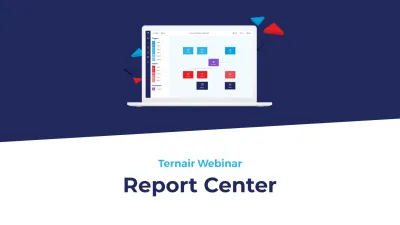Retargeting is one of the most powerful tools you can use to win back potential customers. In this blog, we will dive into exactly what a retargeting campaign entails, why it is an essential part of your marketing strategy, how to set up an effective retargeting campaign, and how to successfully deploy a retargeting campaign using the platform Ternair. This blog is part of a series of articles in which we highlight different marketing automation campaigns.
What is a Retargeting Campaign?
A retargeting campaign, also known as remarketing, is a form of online advertising in which ads are shown to people who have previously interacted with your website or brand. This could include someone who visited a product page but didn't buy anything, or someone who signed up for a newsletter but then didn't invest further in your offer.The basic idea behind retargeting is simple: repeating your message to people who have already shown interest in what you have to offer increases the likelihood that they will eventually make a conversion, such as a purchase or signup. This makes retargeting a highly targeted and effective way of advertising.
"Retargeting campaigns have, on average, a 10 times higher click rate (CTR) than regular display ads. This is because the ads are shown to people who have already shown interest."
Why are Retargeting Campaigns Important?
Retargeting campaigns are important because they cater to a warm audience. Unlike regular display ads, which often target new, unfamiliar users, retargeting targets people who are already familiar with your brand. This means you don't have to start from scratch; interest has already been generated. Because of this, retargeting campaigns are often more effective at generating conversions.Some reasons why retargeting campaigns are crucial:
Higher conversion rates's: Visitors who have previously visited your Web site are more likely to return and make a purchase if they are reminded of their interest.
Increased ROI: Because retargeting targets an audience that is already interested, you are more likely to use your marketing budget effectively.
Increased brand recognition: By repeatedly highlighting your brand, you increase the likelihood that potential customers will choose your brand when they are ready to make a purchase.
Better segmentation and personalization: Retargeting allows you to segment your target audience based on previous interactions with your website, allowing you to show personalized ads that match their interests.
"Companies often see a 50% to 70% increase in conversion rates when they employ retargeting in their marketing strategy, resulting in a significant improvement in ROI."





